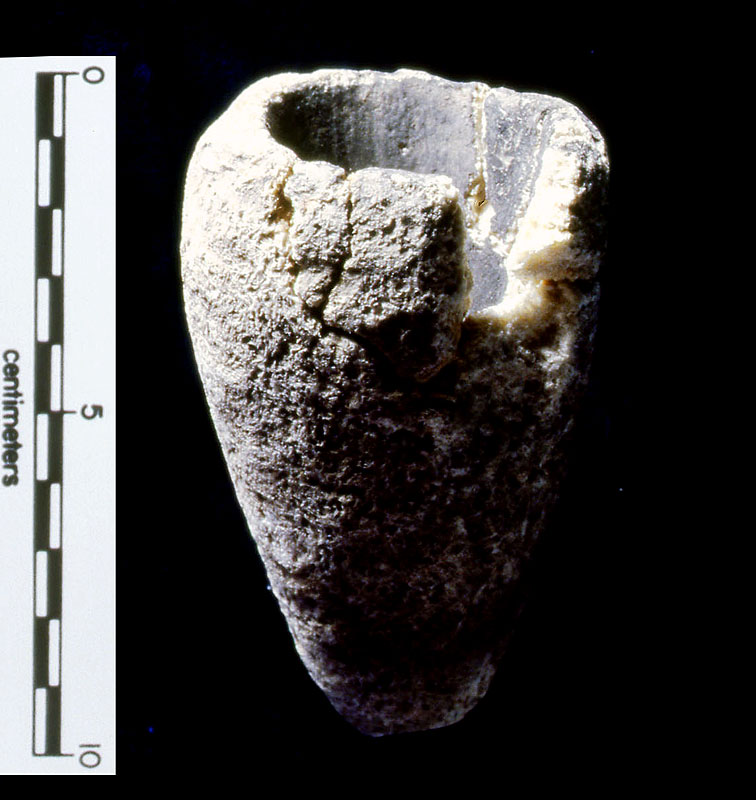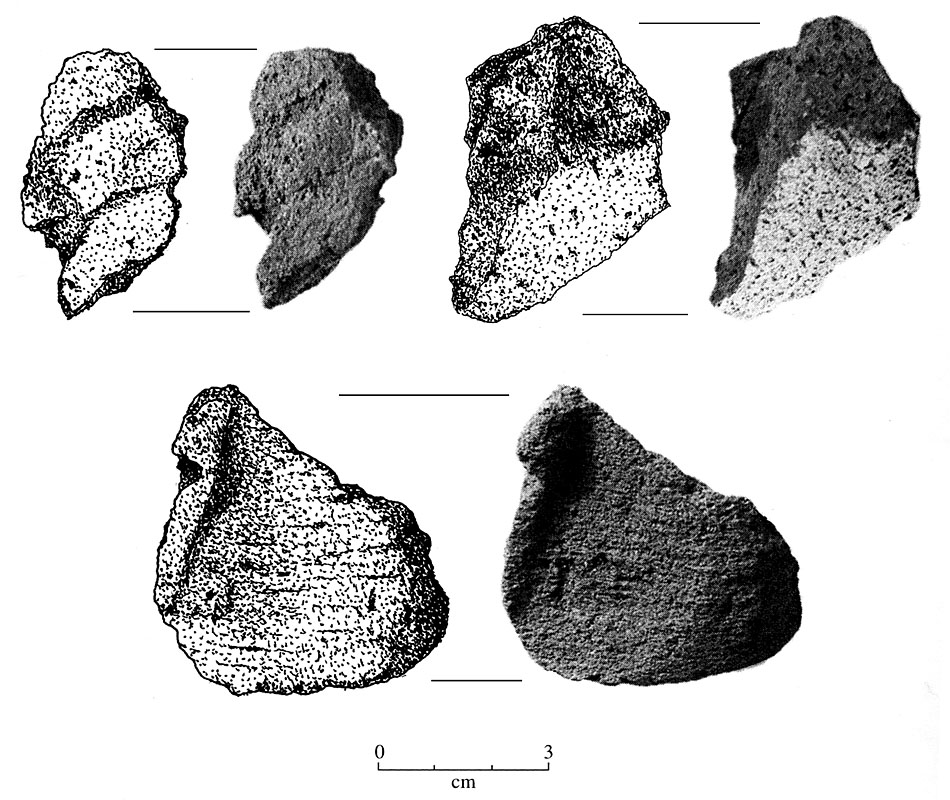Pumice
Pumice is a highly porous igneous rock that floats due to its extremely low density, and chunks of it regularly wash up on beaches of the Texas coast. Although floating pumice is known to originate from volcanoes in Africa and Central America, most Texas specimens probably come from the nearest known source, the Tuxtlas Mountains near the Gulf coast in southern Mexico below Veracruz. Pumice, which is actually a type of volcanic glass, forms when super-heated frothy magma undergoes rapid cooling and rapid depressurization. Depending on the elemental inclusions, pumice ranges in color from white, cream, blue or gray to green-brown and even black.
Pumice is highly abrasive and its primary use along the Texas coast was an abrader, possibly for shaping shell and bone, or perhaps to work leather. Today, pumice stones are found in apothecaries and are used to exfoliate dead skin. Intact pumice abraders are rarely found at coastal archeological sites, however abrader fragments with smoothed and shaped edges are more common. Most common of all are small pumice fragments about which little else can be said. Due to the brittle and easily broken nature of pumice, this volcanic stone is probably underrepresented in archeological assemblages. As a result, the extent of pumice utilization as a raw material is hard to gauge.
A unique pumice artifact found in the Rio Grande delta in Cameron County is an almost intact pipe bowl similar in size and shape to stone pipes found at inland sites in south Texas. These “cloud blower” pipes would have included a hollow stem of bone or wood when used for smoking.
![]()

